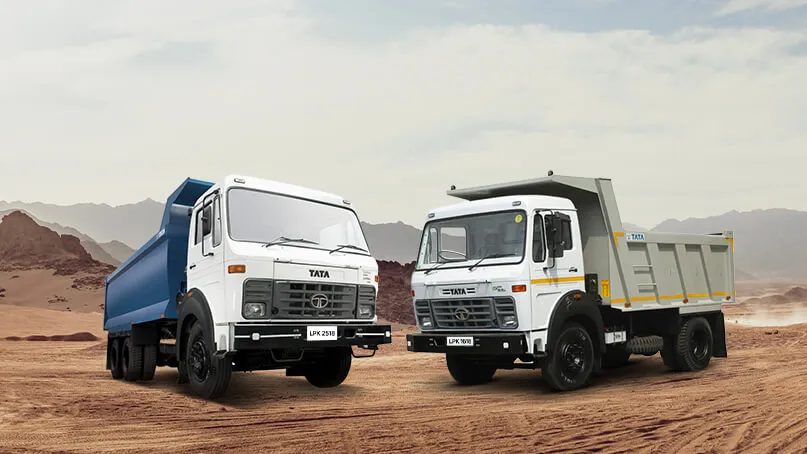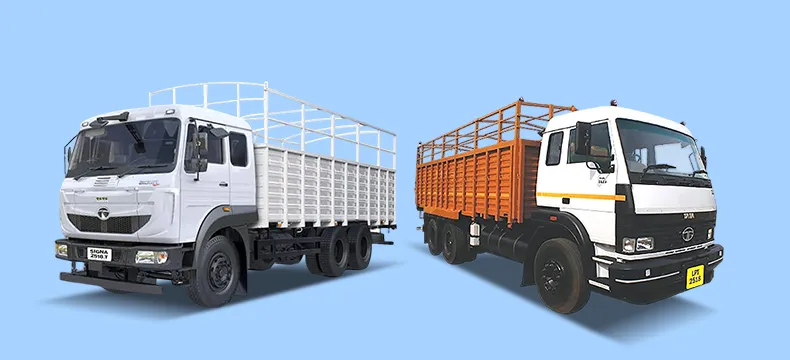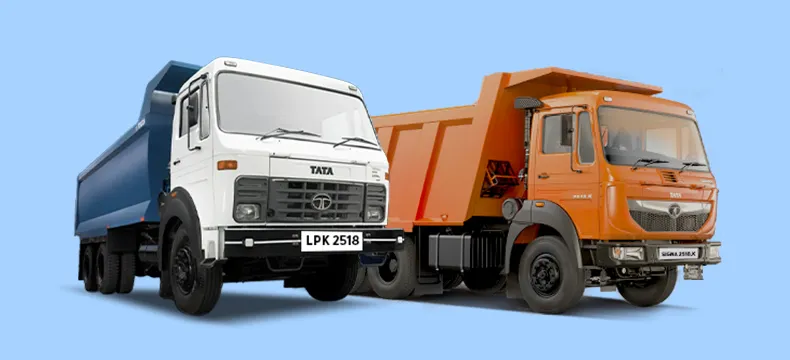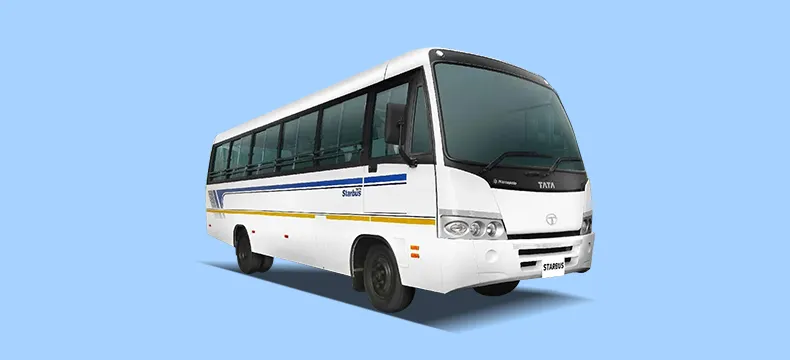11 Mar 2025

Choosing the Right Tipper Truck Capacity and Size
- Tata Motors
- 7 Nov 2023
- Commercial Vechicle
Introduction
Choosing the right tipper truck is crucial as Bangladesh progresses in its development journey. These versatile machines play a vital role in industries like construction and agriculture, impacting efficiency, cost-effectiveness, and safety. In this article, we'll explore the important factors of tipper truck capacity and size in Bangladesh, revealing lesser-known facts and their significance in the nation's growth.
The Diversity of Tipper Truck Capacities and Sizes
Tipper trucks are available in a wide range of capacities and sizes, so it's important to understand the different options. Capacities can vary from a few tons to over 30 tons, while sizes can range from compact models to large, heavy-duty trucks . It's crucial to choose the right combination of capacity and size to match specific job requirements.
-
Light-Duty Tipper Trucks (1-5 tons):
These compact trucks are perfect for smaller projects, especially in urban areas where maneuverability and accessibility are crucial. They are commonly used for tasks like landscaping, debris removal, and small-scale construction.
-
Medium-Duty Tipper Trucks (6-15 tons):
Medium-sized tipper trucks strike a balance between capacity and maneuverability. They are versatile and find applications in various industries, including agriculture, construction, and the transportation of medium-sized loads.
-
Heavy-Duty Tipper Trucks (16-30+ tons):
These trucks are the workhorses of heavy construction and industrial operations. Heavy-duty tipper trucks are designed to efficiently handle substantial payloads. They are commonly used for transporting construction materials, mining operations, and large-scale infrastructure projects.
Matching Capacity to Job Requirements
-
Underestimating Capacity:
Selecting a tipper truck with inadequate capacity can lead to the requirement for multiple trips to transport materials. This can result in escalated fuel consumption, labor costs, and project delays.
-
Overestimating Capacity:
Choosing a tipper truck that is larger than necessary can be expensive, as it may involve higher initial investment and operational costs. Additionally, it may be less maneuverable, posing challenges in navigating congested or tight spaces.
Specialized Tipper Trucks
-
Off-Road Tipper Trucks:
These robust vehicles are specifically designed to navigate challenging terrain, including hilly and rural areas. They are equipped with advanced suspension systems, larger tires, and powerful engines to effectively handle rough conditions.
-
Articulated Tipper Trucks:
Articulated tipper trucks consist of a tractor unit and a separate trailer, enabling them to carry larger loads while maintaining excellent maneuverability. They are commonly utilized in mining operations and large-scale construction projects.
-
Mini Tipper Trucks:
These compact vehicles are purpose-built for tasks that require minimal capacity, such as gardening, landscaping, and small-scale material transportation within urban areas.
The Cost
-
Initial Investment vs. Operating Costs:
One aspect that is often overlooked is the balance between the initial investment and the long-term operating costs. Although larger tipper trucks may have a higher upfront cost, their efficiency in transporting larger quantities can result in lower overall expenses over time. Conversely, smaller trucks may be cheaper initially but could incur higher operational costs due to increased trips.
-
Maintenance and Repair Costs:
Tipper trucks are subject to wear and tear, and their size can impact maintenance and repair expenses. Larger trucks may require more substantial maintenance, which can be costly. On the other hand, smaller trucks may have lower maintenance expenses but could experience quicker wear and tear if consistently overloaded.
Safety Considerations
-
Load Distribution and Stability:
One of the primary safety concerns associated with tipper trucks is the proper distribution and stability of the load. Overloading the truck or unevenly distributing the load can result in instability, increasing the risk of tipping over, especially on hilly and uneven roads.
-
Maneuverability and Accessibility:
Tipper trucks, particularly larger models, may face challenges in terms of maneuverability and accessing tight construction sites or navigating congested urban areas. This can pose safety risks for both the truck and pedestrians or other vehicles.
-
Braking Systems:
Ensuring efficient braking is crucial, especially when tipper trucks are carrying heavy loads. Inadequate braking systems can lead to accidents, particularly when traveling downhill or on steep gradients.
-
Driver Training and Safety:
The safety of tipper truck operations largely depends on the skills and behaviors of the drivers. Insufficient training and failure to adhere to safety guidelines can result in accidents and injuries.
-
Visibility and Blind Spots:
Tipper trucks can have significant blind spots due to their size and design. These blind spots can make it challenging for drivers to see pedestrians and smaller vehicles around the truck.
-
Road Conditions:
The diverse and often challenging road conditions in Bangladesh, including potholes, unpaved roads, and uneven surfaces, can pose safety hazards for tipper trucks.
Lesser-Known Facts
-
The Bridge Formula:
In order to prevent road damage, Bangladesh's road infrastructure imposes weight restrictions on vehicles. Tipper truck operators should be aware of the "Bridge Formula," which regulates the weight distribution across axles and affects the allowable capacity.
-
Innovations in Lightweight Materials:
Advancements in material technology have resulted in the creation of lightweight tipper trucks. These trucks offer higher payloads without compromising on strength or safety.
Conclusion
In the symphony of progress that Bangladesh is orchestrating, selecting the appropriate capacity and size of tipper trucks plays a crucial role in achieving efficiency, cost-effectiveness, and safety. Whether it involves constructing infrastructure, cultivating fields, or transporting goods, each project requires a specific rhythm that can only be achieved with the right tipper truck. As Bangladesh continues its dynamic journey towards prosperity, making well-informed decisions regarding tipper truck capacities and sizes will serve as the guiding force, ensuring that progress moves forward with accuracy and purpose.
- Tags





















